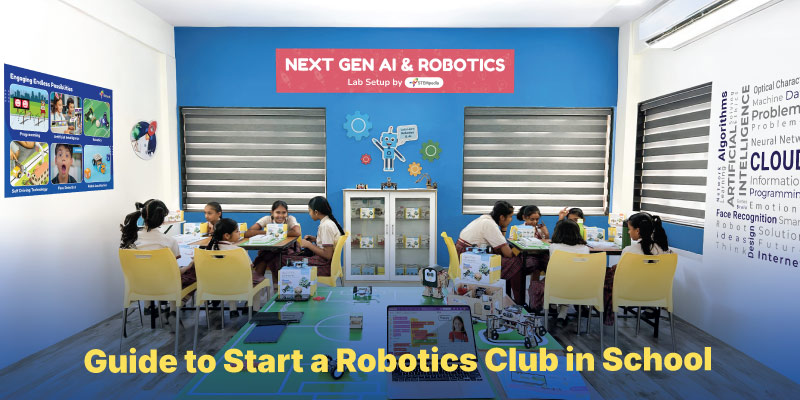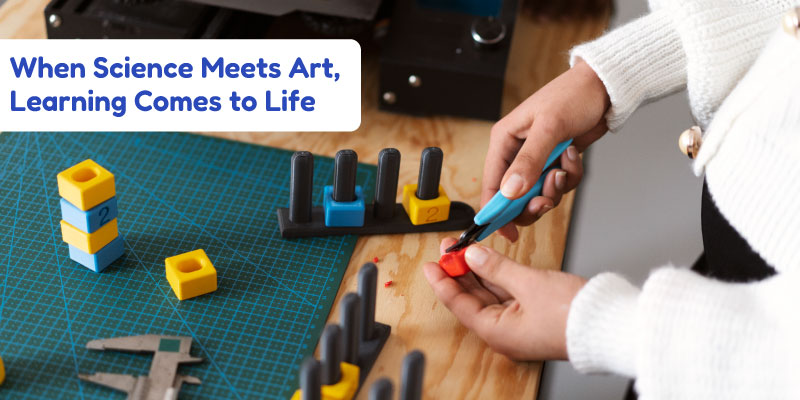Starting a robotics club in school is often a bold and welcomed move as far as taking initiative is concerned. It fosters creativity, problem-solving, and STEM skills in students. But to turn it into a hub for innovation and learning, the right planning and resources play an important role for inviting robotics in classrooms.
Incorporating a robotics club in school also addresses the STEM skills gap. This ensures that the education system is producing graduates with the skills required by the job market (Ayeni et al., 2024)
Here’s a step-by-step guide to help you establish a successful school robotics club.
Step 1: Get School Approval And Gather Support
Before diving into robotics, you’ll need to get approval from your school administration. Prepare a proposal outlining the club’s objectives, benefits, and alignment with STEM education goals. Highlight how robotics clubs in school enhance problem-solving skills, teamwork, and coding knowledge.
Additionally, gather support from teachers, staff, and parents who can help with club logistics and mentoring. A strong support network increases the chances of success.
A well-prepared proposal increases the chances of getting school approval and building a strong support network. You can refer to a template here.
Step 2: Define the Club’s Structure And Schedule
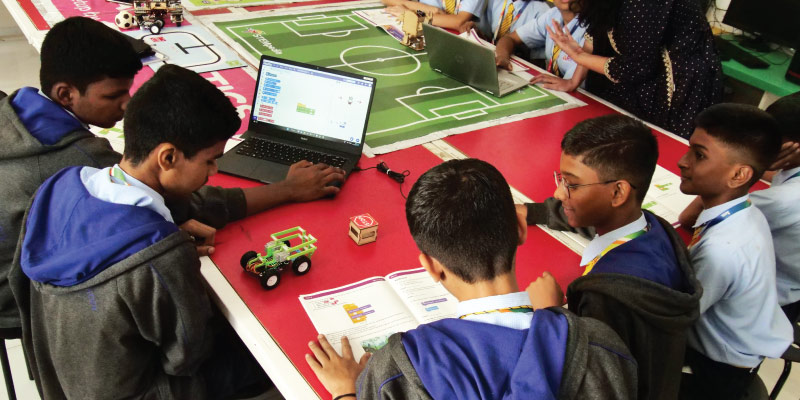
Once you get approval, establish a clear structure for the club. Now, you must decide on:
- The meeting frequencies of your club- weekly, bi-weekly, or monthly.
- Duration of sessions- 30 minutes, 1 hour, etc.
- The club can be for all grade levels.
- Goals, such as introducing coding, building a robot, or preparing for competitions like Codeavour International, an annual AI, coding, and robotics competition hosted by STEMpedia.
A clear structure ensures consistency and makes it easier to manage the club effectively. and also bring like-minded people together.
Step 3: Secure Funding And Resources
To sustain a robotics club in school, explore different funding options:
1. School budget allocations:
- Talk to a teacher or School Admin
- Ask if your school has any budget for student clubs
- Present your idea to the principal or a teacher who supports STEM activities
2. Grants and sponsorships:
- Some companies and organizations give money (grants) to schools for STEM education.
- Research local businesses or tech companies that might want to support your club.
- Ask your school if they can help you apply for these grants.
3. Fundraising events and donations:
- Plan a bake sale, school fair, or raffle to raise money
- Create a crowdfunding campaign on platforms like GoFundMe with the help of teachers or parents.
- Talk to parents, alumni or local businesses to see if they can donate funds or old robotics kits
Keep track of all the money collected and spend it wisely on robots, coding tools, and competition fees.
Step 4: Choose the Right Robotics Tools And Kits
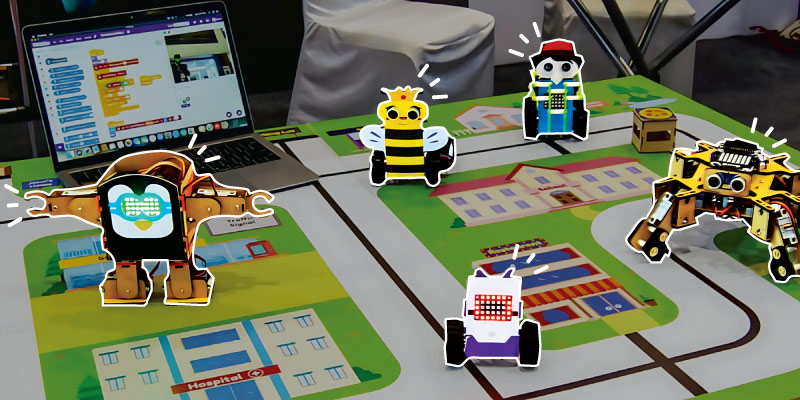
When choosing the right robotics kits for classrooms, age and skill level are key factors to consider. That’s where Wizbot comes in. Designed for 4- to 10-year-olds, it teaches basic programming concepts through hands-on, button-based coding. No screens required. That makes it perfect for developing algorithmic thinking from the ground up.
Quarky is geared towards students aged 7 and up. With it, they can get hands-on experience in AI, robotics and IoT. They can build and program real-world robots, and see the results for themselves.
PictoBlox works with both Quarky and Wizbot. This powerful AI-based coding platform supports both block-based and Python coding. That means students can use it to program Quarky for AI-driven projects or Wizbot for movement-based coding activities. And that opens up a whole lot of learning possibilities.
Ensure the kits are age-appropriate, budget-friendly, and align with your club’s learning objectives. Also, decide if the activities will be screen-based or screen-free. The right robotics tools will set the foundation for engaging and progressive learning. Reach out to edtech companies like STEMpedia to ask for discounts on robotics kits like Quarky and Wizbot.
Step 5: Plan Engaging Activities And Curriculum
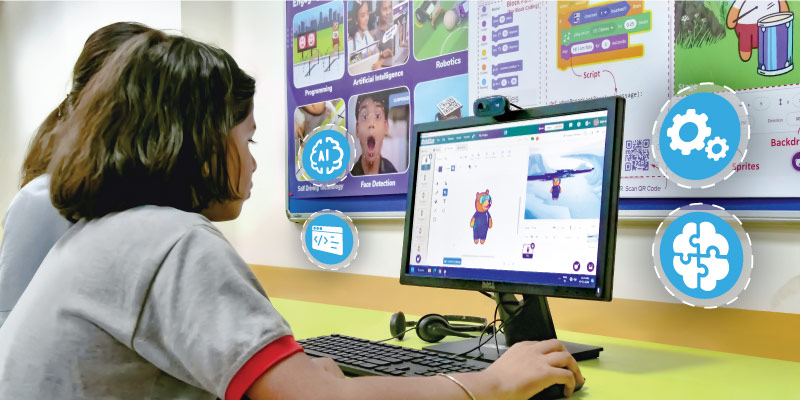
Keeping students engaged with robotics in classroom requires an exciting curriculum. You can start with:
1. Simple hands-on activities such as:
- Basic Robotics and Coding Introduction: Use Wizbot for younger students to teach movement-based coding through button commands.
- Build a Simple Robot: Have students assemble a basic robot using Quarky and program it with PictoBlox to perform simple tasks.
- AI and Machine Learning Projects: Use PictoBlox to introduce AI-based projects, such as facial recognition or speech-based commands.
2. Problem-solving challenges and real-world applications.
3. Progressing to AI, automation, and IoT projects.
4. Using guided resources from STEMpedia’s curriculum books, online courses integrated in a fun way, etc.
The goal is to make learning fun and interactive while developing crucial STEM skills. An engaging curriculum for robotics club keeps students excited and encourages continuous learning.
Step 6: Recruit Students And Build Engagement

Encourage student participation by promoting the club through:
- School announcements and flyers
- Social media and online platforms
- Hosting a robotics demo day
Step 7: Recruit Students And Build Engagement
Getting students to join your robotics club is just the beginning. You also need to keep them interested and actively participating. Here’s how you can do both:
-
Recruiting Members:
Start it in an exciting way!
- Use School Flyers and Announcements– Design cool flyers and advertise the club during school assemblies.
- Social Media Marketing– If allowed by your institution, create a WhatsApp or an Instagram group and post updates there.
- Host a Robotics Demo Day– Host a booth at a school function to show off what robots can do! Get students to code simple things using Wizbot or experiment with AI features using Quarky.
2. Keeping Members Interested:
After enrolling the students, get them interested in robotics. Here’s how:
- Make Meetings Engaging And Interactive- Every session should include a mix of coding, robotics, and challenges.
- Design Friendly Competitions- Conduct in-club competitions where students code coding challenges in PictoBlox or create their own robot obstacle courses.
- Work Towards a Goal- Plan to engage in activities such as Codeavour to provide students with a sense of accomplishment.
- Encourage Teamwork- Offer group projects where students apply robotics to solve real-world issues.
- Celebrate the Achievements- Reward with certificates, social media shout-outs, or leadership assignments to motivate the students.
Word of mouth and student testimonials can also help bring in new members. Nowadays, you can see clubs in schools and colleges are able to build amazing engagement through instagram reels. Since everyone is on their phones all the time, why not leverage that? Hopping on trends online while tailoring it to your target audience is a great way to build the hype. Strive for a student-led approach.
Get members to bring project ideas to the table and take the club in charge!
Step 8: Participate in Competitions And Showcase Projects
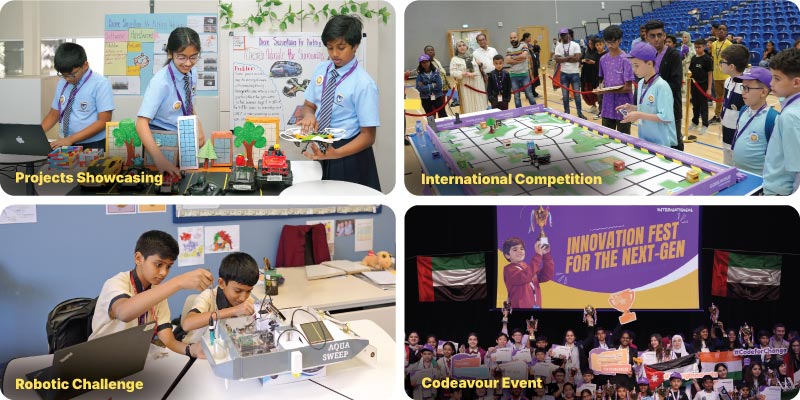
To keep students motivated, encourage them to:
- Join national and international competitions like Codeavour
- Organize school-level robotics challenges
- Showcase projects at science fairs or school events
Competitions provide recognition, boost confidence, and allow students to apply their skills in real-world scenarios.
Conclusion
Setting up a robotics club in school requires planning, resources, and enthusiasm. By following these steps, you can create a club that fosters innovation and critical thinking. With the right tools, support, and enthusiasm, your school’s robotics club can become a thriving hub for innovation and learning.
Stay connected with STEMpedia for the best robotics tools, curriculum support, and coding resources. Follow us on instagram, LinkedIn to stay updated with the latest in STEM education!

